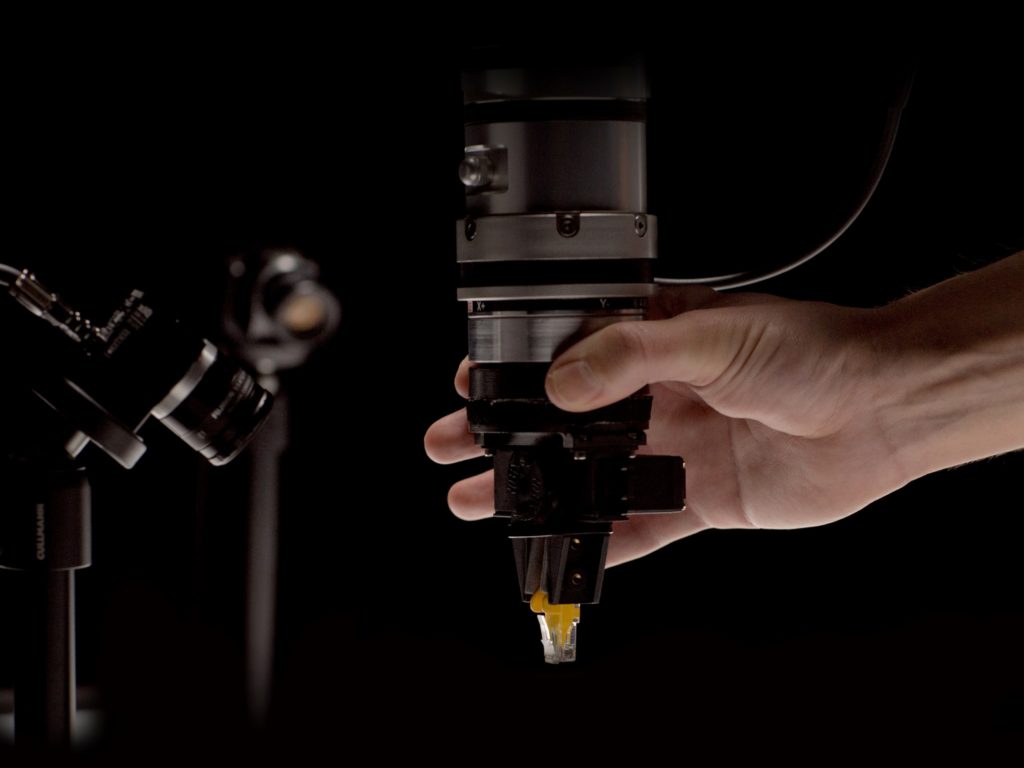
Robotics is on the path to having its “PC Moment”—that moment when computers stopped being massive machines that only a handful of corporations could operate to something everybody found a use for—small businesses first, homes some time later. By taking a look at the PC Moment, we can hope to learn where robotics might be headed and what to expect.
The dawn of the personal computer era is the subject of some debate. Some point to September 1975 with the launch of the IBM 5100, a “portable” computer that weighed 50 pounds and cost between $9,000 for 16 KB of storage and $20,000 for 64 KB. Others point to 1977’s TRS-80, which booted up from a cassette tape deck, or the better-known Apple II.
The machine that really changed the game in 1981 however was IBM’s “PC.” Before the PC, a growing home computer industry had produced lighter and less expensive computers—important advances that we also expect to see in robotics—but these machines did not bring the key factors that revolutionized the market and put a computer on the desk of every corporate office, and shortly thereafter, in every home. The PC got a number of crucial things right—not all at once, but in the course of the ’80s:
- Robots are becoming platforms: The PC was a platform. There were many software-compatible clones, and PCs could be extended with third party components that would work in different machines, even different generations. With BIOS and DOS, standardized APIs made sure programs were as portable between PCs as components were. We see first signs of similar developments in robotics: There is now a thriving ecosystem of components that are pre-integrated with certain robots and combining them into systems is becoming easier and easier.
- Robots need software ecosystems: It wasn’t IBM who made the killer apps for PCs, and had they limited PCs to IBM software, Microsoft wouldn’t have happened, and none of the things that followed, including the unlikely transformation of the platform from a drab office machine into what is arguably still the most advanced gaming system. The same thing will happen in robotics: There will be third parties writing standardized software for common applications, and interoperability between these robot programs will matter.
- Robots need to be programmable by non-professionals: PCs came with BASIC and adding C++ or Pascal compilers was easy. Nobody had to write assembly for PCs unless they absolutely wanted to (because they were pushing the boundaries with games or demos). For robots, machine learning could be that link between basic, hard-to-program low level interfaces and applications: Using ML as a way to transform intentions into low-level execution code will allow people to build applications without having to understand the intricacies of the machine they use.
- Robots need good user interfaces: Windows brought high-res, intuitive, standardized user interfaces to the PC, adding a major driver for the platform’s success. We see the same happening in robotics today: Ease of use for operators – and just offering standard, familiar user interface elements instead of cryptic code—is what drives adoption of collaborative robots today.
- Robots need to be safe: Programmability means bad programs, simply buggy, or even malicious ones. Viruses showed up when their only way to spread was on disks, but once PCs got connected to the internet and were becoming banking terminals, safety really became important. Safety is even more important for robots than it was for PCs—they’re physical, sometimes quite strong, and things moved by software! Luckily, the trend towards light, soft robots is strong already. Arguably the “collaborative” in “Collaborative Robots” (known as cobots) is not about actually working together, but mostly about being safe when humans and robots share the same environment.

Humans learn through observation, imitation, and repetition. So do robots: they follow the guidance provided by human trainers, observe the patterns, and generalize to what makes a good movement. As such, the robots are not so much programmed as they are trained—through demonstration, correction, and repetition. This allows users to create skills without writing a single line of code or modelling the problem.
It might be a couple of years before we buy robots like tools in a hardware store, and put them to work in our homes. But they are on their way to small businesses who have the occasional boring, repetitive physical task to automate. Like PCs, they’ll change profoundly what people spend their time on at work. And just as with PCs, software is of crucial importance to what we can do with them. Machine learning drives the type of software that deals with pattern recognition in the real world, so it’s machine learning that will enable most of the more interesting use cases for robots.
About the Author
Ronnie Vuine is CEO and founder of Micropsi Industries, a robotics software company headquartered in Berlin, Germany that has been recognized by Smart Industry as one of 10 startups whose “technology will shape our future.” A philosopher and computer scientist by training, he has a longstanding passion for artificial intelligence and enabling technical systems to interact autonomously with the real world.



